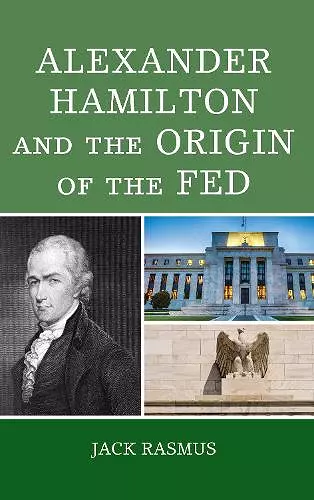Alexander Hamilton and the Origins of the Fed
Format:Hardback
Publisher:Lexington Books
Published:28th Feb '19
Currently unavailable, and unfortunately no date known when it will be back
This hardback is available in another edition too:
- Paperback£37.00(9781498582865)

The US in 1913 was one of the last major economies to establish an institution of a central bank. The book examines, however, the history and evolution of central banking in the US from the perspective of central banking functions—i.e. aggregator of private lending to the federal government, fiscal agent for the government, regulator of money supply, monopoly over currency issuance, banking system supervision, and lender of last resort. The evolution of central banking functions is traced from earliest pre-1987 proposals, through the Constitutional Convention and Congressional debates on Hamilton’s 1st Report on Credit, the rise and fall of the 1st and 2nd Banks of the United States, through the long period of the National Banking System, 1862-1913. The book describes how US federal governments—often in cooperation with the largest US private banks in New York, Philadelphia, and elsewhere in the northeast—attempted to expand and develop those functions, sometimes successfully sometimes not, from 1781 through the creation of the Federal Reserve Act of 1913. Other themes include how rapid US economic growth, and an expanding, geographically dispersed private banking system, created formidable resistance by banks at the state and local level to the evolution and consolidation of central banking functions at the national level. Whenever central banking functions were dismantled (1810s, 1830s) or were weakened (after 1860s), the consequences were financial instability and severe economic depressions. The book concludes with a detailed narrative on how, from 1903 to 1913, big eastern banks—leveraging the Panic of 1907, weak economic recovery of 1909-13, and need to expand internationally—allied with Congressional supporters to prevail over state and local banking interests and created the Fed; how the structure of the 1913 Fed clearly favored New York banks while granting concessions to state and local banks to win Congressional approval; and how that compromise central bank structure doomed US monetary policy to fail after 1929.
Over the past 12 years, Dr. Jack Rasmus is a prolific writer on the state of the global and U.S. economy, and critic of current and former fiscal and monetary policy. Dr. Rasmus extends his research, allowing us to see the current Federal Reserve from a historical-political-policy and economic context, and how the bank evolved over the years; however, it seems the bank continues to make the same mistakes as earlier banks: excessive money supply, lack of supervision, speculative lending, asset price bubbles, bank bailouts, and lower standards of living-social welfare. Seems there needs to be central bank reform. -- Lawrence A. Souza, St. Mary's College
ISBN: 9781498582841
Dimensions: 233mm x 159mm x 17mm
Weight: 404g
146 pages